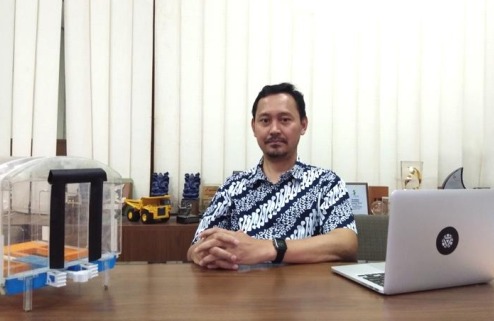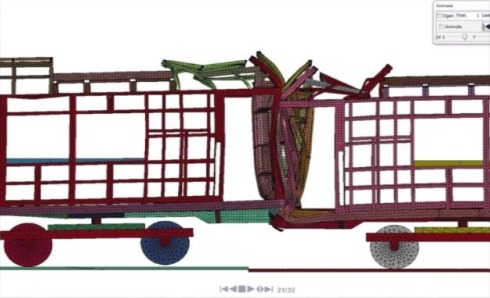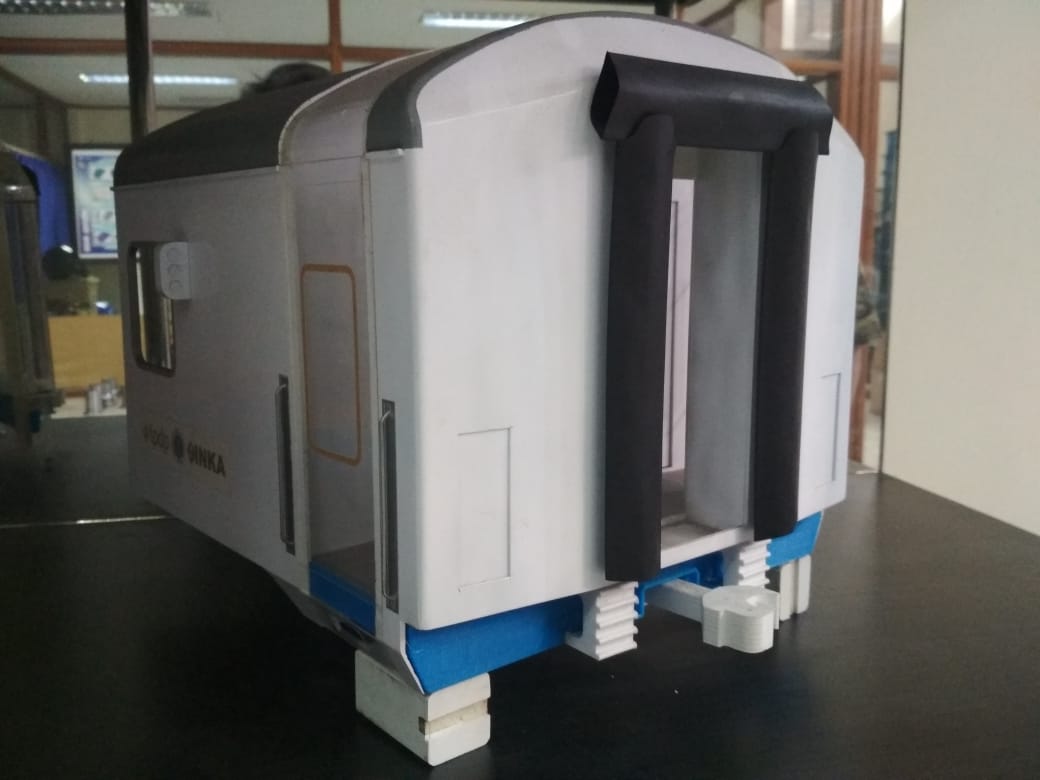Crashworthiness Technology by ITB Lecturer to Reduce Impact Risk on Train
By Adi Permana
Editor Adi Permana

*Dr. Rachman Setiawan
BANDUNG, itb.ac.id – Impact risk in transportation remains a high occurrence. The crash could involve two or more vehicles or other objects and cause material loss or casualties. Hence, safety has to be the main concern in a vehicle design.
There are two methods to reduce risk of vehicles crash; the first is application of active safety by installing crash avoidance safety feature with a micro controller and actuator sensors, and the second is using passive safety technology.
A Lecturer in Faculty of Mechanical and Aerospace Engineering (FTMD) ITB, Dr. Rachman Setiawan, together with his team conduct a research which focuses on a passive safety technology, crashworthiness technology. The technology is created to reduce the risk of train crash. “Our research focuses on passive safety technology by increasing vehicles’ crashworthiness,” he said.
Crashworthiness is a structure's or vehicle’s capability to protect the passengers or cargos during a crash. Considering train’s high speed and high number of passenger, the impact of a train crash is massive.
“The main aim of crashworthiness is to enhance trains’ safety during a crash. Of course we do not want it to happen, but should a crash occurred, the passengers have to remain safe,” Dr. Rachman explained.
This lecturer in Engine Design Research Group explained that if the technology is applied, the train structure in a crash will receive damages on certain areas, but not on the wagon which is filled with passengers. Hence, it will keep the casualties minimum. “Crashworthiness is applicable not only to train, but also to other types of vehicles. This research focuses more on train because a crash would result in massive casualties,” he added.
*Module used to reduce crash risk on train
Dr. Rachman added that a train crash has a fatal risk because trains move in high speed, carry heavy loads, and filled with a lot of passengers. Train is basically designed as a mass transportation that prevent crash, but historically, train crash often occurred.
“In short, the working mechanism of crashworthiness is about how to absorb impact energy, because in a crash that happens in a speed of 100 km/hour, the impact energy will damage train’s structure to the extent that the passengers are thrown. In this research we design it so that the energy is absorbed by certain train areas that carry no passengers,” he said.
The crashworthiness technology is placed on wagon near wagon connector. That area is passenger-prohibited zone.
In order to establish passive safety technology in national trains, a number of researches on crashworthiness have been conducted. The first is design making that prioritize on specific absorption of impact energy to be applied on national trains using minimum modification of existing train design.
Second, to avoid greater impact in a crash, ITB has designed ‘anti-climber’ technology. Therefore, when a crash occurs, a wagon will not ‘climb’ over other wagon. The technology is implementable specifically in Indonesia, but with minimal modification, is also implementable in all over the world.
Research on crashworthiness technology, Rachman said, began to be initiated in the early 2000s. However, it is yet to be implemented on Indonesia trains. Therefore, the research team try to approach the government to implement the technology in PT. Kereta Api Indonesia and PT. Inka.
“Now, our target is its implementation. Even if we have the technology, it would go to waste without implementation. We have convinced PT. Kereta Api Indonesia and PT. Inka that this technology is ready. Its application will not cost high. We also talk to Ministry of Transportation that crashworthiness technology is a must, and it is already exist,” he said.
He also said that crashworthiness technology can be applied to all type of trains. It has gone through several tests, and has been applied to LRT Palembang in corporation with PT. Inka. “Hopefully all trains in Indonesia will be installed with the technology,” he said.

.jpg)
.jpg)
.jpg)
.jpg)
.png)
